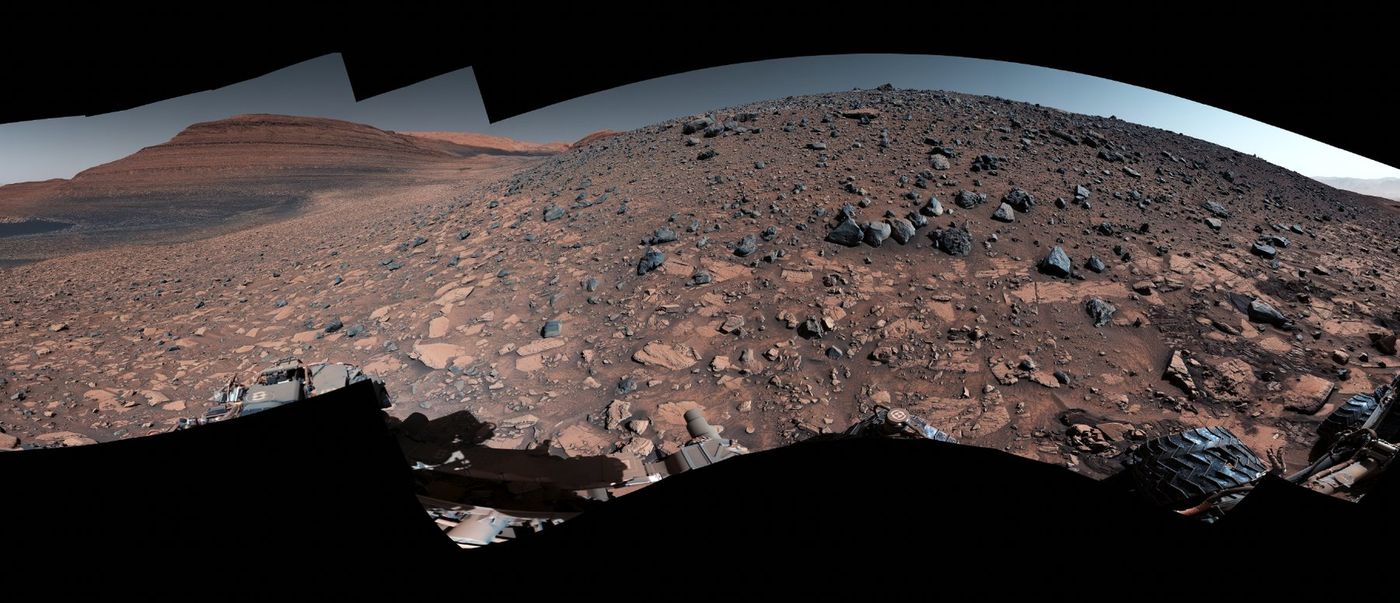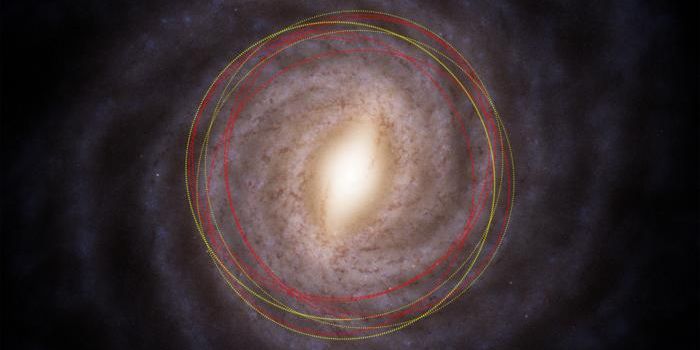Mars' Geological History Revealed: Curiosity Rover at Gediz Vallis Ridge
NASA’s Mars Curiosity rover has been hard at work on the Red Planet since 2012 teaching us more and more about this mysterious and awe-inspiring world, specifically pertaining to its ancient past and when it might have had life. Most recently, the pioneering rover reached Gediz Vallis Ridge, which rests at the bottom of Mount Sharp, on its fourth attempt due to steep slopes and knife-edged “gator-backed” rocks. The reason why NASA has been so eager to traverse this ridge is due to a debris flow that scientists hypothesize is an excellent record of a time when Mars was much warmer and wetter than it is today.
A 360-degree panorama taken by NASA’s Curiosity while investigating Gediz Vallis Ridge (right side of image), which is comprised of a debris flow fan that scientists hypothesize formed billions of years ago on Mars. After three previous attempts, the rover finally traversed the ridge on its fourth try. (Credit: NASA/JPL-Caltech/MSSS)
“After three years, we finally found a spot where Mars allowed Curiosity to safely access the steep ridge,” said Dr. Ashwin Vasavada, who is a NASA JPL project scientist for the Curiosity rover. “It’s a thrill to be able to reach out and touch rocks that were transported from places high up on Mount Sharp that we’ll never be able to visit with Curiosity.”
During its 11-day trek at the ridge, scientists back at NASA JPL were busy commanding Curiosity to snap as many photos as possible, along with examining the dark rocks that comprised the debris flow that originated from atop Mount Sharp several billion years ago. These images included a mosaic comprised of 136 images that provide a breathtaking 360-degree view of Curiosity’s immediate surroundings. The debris flow that Curiosity is investigating is also known as a debris flow fan or alluvial fan, which is when debris flowing downhill spreads out into a fan-like structure. While such structures are common on both Earth and Mars, researchers are continuing to learn about their formation processes on both planets.
“I can’t imagine what it would have been like to witness these events,” said Dr. William Dietrich, who is a professor in the Department of Earth and Planetary Science at UC Berkeley, and a Curiosity mission team member who has helped lead the ridge’s investigation by Curiosity. “Huge rocks were ripped out of the mountain high above, rushed downhill, and spread out into a fan below. The results of this campaign will push us to better explain such events not just on Mars, but even on Earth, where they are a natural hazard.”
February 2023 video from NASA JPL
Scientists will continue to examine the recent data for some time while they simultaneously chart a new path for Curiosity’s next scientific challenge: the channel that resides above the ridge that was responsible for creating the debris flow billions of years ago.
What new discoveries will Curiosity make about the history of ancient Mars in the coming years and decades? Only time will tell, and this is why we science!
As always, keep doing science & keep looking up!
Sources: NASA, Wikipedia, Wikipedia (1)









